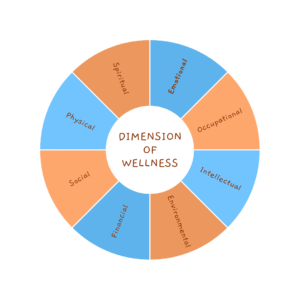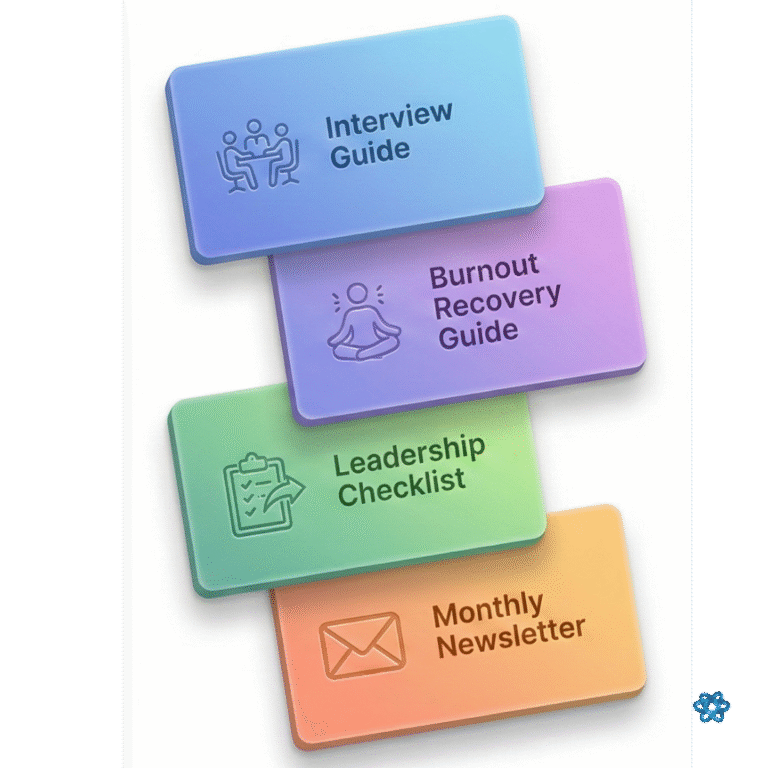
We’re diving into an exciting tool that I’ve found incredibly useful in my 15+ years as a life and career coach—the Wellness Wheel.
If you’ve ever felt like life’s demands are pulling you in too many directions, or if you simply want to understand yourself better, you’re in the right place.
The Wellness Wheel is a simple tool used to visualize your current state of well-being. Imagine a circle divided into three clusers, Personal, Professional and Environmental sections, each representing a different area of our lives. By assessing each area, you create a snapshot of your life, highlighting areas of gratitude and areas of opportunity.
But why is this important?
How often do we really stop to take stock of where we are and where we want to be?
The Wellness Wheel encourages you to reflect on these questions. It’s about finding balance and recognizing that every part of your life is interconnected.
Complete the wellness wheel activity
Let’s walk through the steps of completing a Wellness Wheel activity. This process is all about engaging with yourself honestly and mindfully. Remember, there’s no right or wrong way to do this—it’s your personal journey.
-
Reflect: Ponder about the last 3 months, or your self-determined timeline. I’d stay within the past quarter of the year, since the further we go back the less reliable out memory serves us. You’ll be introduced to the following sections, think not in generalities, but in specifics areas of your life in these categories.
-
Rate each category: For each section, rate your current satisfaction on a scale from 1 to 10. Be honest with yourself. What areas feel fulfilling, and which ones are lacking? This is your chance to reflect deeply – categories description below.
-
Reflect and prioritize: Look at your completed Wellness Wheel. Ask yourself: What am I grateful for? Where can I make improvements? Which areas do I want to focus on first? Write down your thoughts and set SMART goals for growth. Small steps lead to big changes!
-
Revisit regularly: Life is dynamic, and so are you. Make it a habit to revisit your Wellness Wheel regularly, ideally every month. Notice how things change over time and adjust your goals accordingly. This practice encourages mindfulness and continuous growth.
-
Graph below: Try it for yourself now, scroll down, reflect, rate, and download a copy.
Note, the graph is color coded, Green = Healthy, Yellow = Moderate, Red = Seek support
Interactive wellness wheel assessment
Category Descriptions
Personal Wellness
-
Physical Wellbeing: Your satisfaction with your body’s current energy levels, fitness, diet, sleep quality, and general health (e.g., managing illness).
-
Emotional Wellbeing: Your ability to recognize, understand, and healthily express your feelings, maintain a positive outlook, and cope effectively.
-
Social (Friends/Family): Your satisfaction with the quality, support, and depth of your relationships with immediate friends and family.
-
Relational (Partner): Your satisfaction with the health, communication, intimacy, and level of commitment in your intimate relationship (if applicable).
-
Community (Spiritual): Your sense of purpose, meaning, connection to something greater than yourself.
-
Recreation / Free Time: Your satisfaction with your ability to disconnect from work, actively engage in hobbies, and fun activities that recharge you.
Professional Wellness
-
Career Aspiration (Prospect): Your feeling clear path toward your professional goals, including career development, skill building, etc.
-
Intellectually Stimulating: Your satisfaction with the level of challenge, learning, and growth your daily work, education, or core responsibilities.
-
Financial (Salary, Savings): Your comfort level with your current income, debt load, savings habits, and overall confidence in your financial future.
-
Career / Industry Enjoyment: Your day-to-day fulfillment, enjoyment, and passion for the specific tasks and environment within your current job.
Environmental Wellness
-
Home / Living Space: Your satisfaction with the safety, comfort, aesthetic quality, and functional organization of the place where you live.
-
Office / Work Environment: Your feeling of being supported, productive, and comfortable within your specific workplace.
The impact on your life snapshot
The impact on your life snapshot

What comes up when you see your life’s snapshot?
Is it surprising? Were you aware with how satisfied you are with your life? There’s no right or wrong here, just how you’ve felt about your life. This is only the beginning.
However, life isn’t always balanced, and that’s okay.
The Wellness Wheel helps you see which areas need more attention and which ones are stable. There may be opportunities where addressing one key area can help improve multiple life categories. Allowing you to be more strategic on how you use your energy and time.
This is your life snapshot, a visual representation of your current state of well-being.
When you see areas that are thriving, it’s a moment for gratitude.
What are you doing right in these areas?
How can you replicate this success in other parts of your life?
On the flip side, identifying areas of opportunity doesn’t have to be demoralizing. It’s a chance to grow, to set goals, and to bring more balance into your life.
Have you ever noticed how achieving balance in one area can positively affect another? It’s all connected!
Areas of Gratitude and Opportunity
Gratitude is a powerful thing.
When you identify areas where you’re doing well, take a moment to appreciate them. Maybe your relationships are flourishing, or your career is on an upward trajectory. Celebrate these victories!
They remind you of your strengths and resilience.
Conversely, areas of opportunity are not just challenges—they’re potential waiting to be realized.
Is your physical health needing more attention? Perhaps your finances are a source of stress. Recognizing these areas is the first step toward making a change.
In opportunity, tackling everything at the same time is exhausting. Yet, when we narrow down and prioritize our opportunities, reflect and journal about the core elements of each, we can leverage the power of connections.
For example, if you’re financially stressed because you have a very fulfilling relationship and recreation meter, you can attempt to reduce some activities to increase your savings and reduce financial stress. That can have a significant impact of balancing out your wellness wheel. As your reduce your financial stress, you’ll more more aligned to take financial risks that can help you increase your income because you had a secure (healthy) financial relationship. Vice versa, if you’re financially stable and healthy, you can focus on giving back to your relationship/s and recreationally to increase those areas.
The whole purpose of the wellness wheel is for your guage your life’s snapshot, and recognize where you can make strategic changes to create a more fulfilling life, and career.

